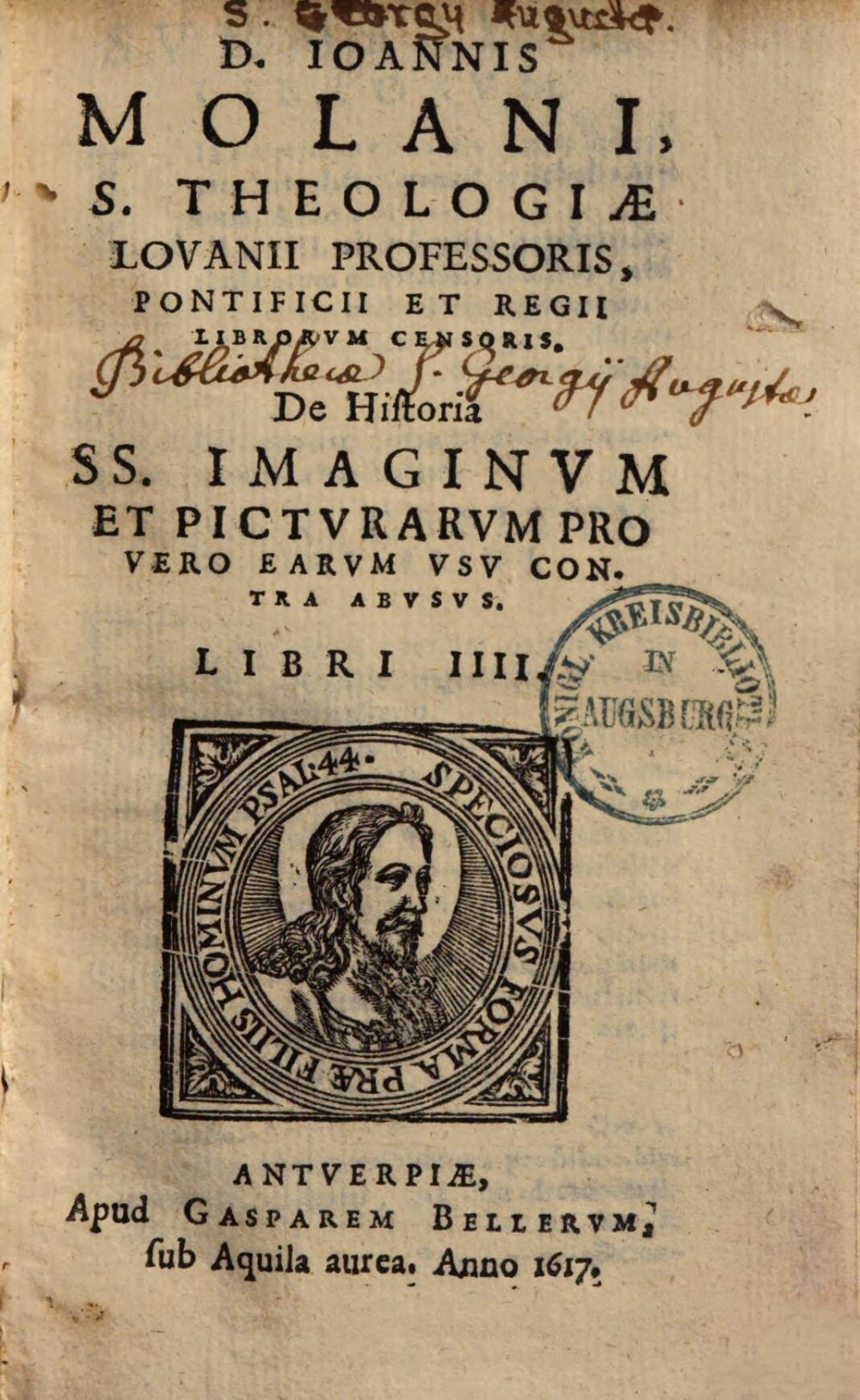
Augsburg, Staats- und Stadtbibliothek — Th H 1475. Digital Reproduction: München, Bayerische Staatsbibliothek, 2015.
In book 2 chapter 37, Molanus deals with the question of impudence in painting. For this matter, Molanus refers to the Council of Trent that ordered that all impudence in art must be avoided. This leads him to conclude that according to Molanus artists should avoid anything impudent in their artworks and that artworks containing impudent features should be adjusted or removed. In several cases, he explains how one should handle impudent artworks, the painters that made them and what impudence can look like.
The second case in this chapter consists of a case Molanus has drawn from the Ecclesiastical Histories by Nicephorus, who recounts that a painter was punished for depicting Christ as the Roman God Jupiter. Molanus uses this account by Nicephorus to indicate how should be dealt with painters that introduce impudence in their art because it could lead people in the direction of impiety and vice, which would also give ground for the heretics to criticise religious art.
“A painter was once justly punished for his fornication because he dared to represent the Saviour in the likeness of Jupiter; his hand withered as a result; the patriarch Gennadius cured him after he had confessed his sin, as Nicephorus reports in his Ecclesiastical Histories, the first book, in the year 463. It is, therefore, that those who lead the people must work with the greatest diligence so that one does not introduce in the images a figure, an attitude, or an ornament which will not steer the people into the direction of piety, but in that of lubricity, pride, curiosity, and other vices; so that, they will not give rise to calumny and blasphemy on the part of heretics, who are on the lookout for the slightest opportunity to engage in them.
“Dedit autem non immerito olim lasciviae poenas pictor quidam quod Salvatorem ad similitudinem Iovis pingere praesumsisset. Arefacta est enim manus eius. Quem tamen postea peccatum suum confessum sanavit Gennadius Patriarcha, ut refert Nicephorus historie Ecclesiasicae libro unico An. 463. Summa iraque diligentia adlaborandum est ab iis qui populo praesunt, ne ea figura, habitu atque ornatu imagines oculis ingerantur, ut non ad pietatem homines informent sed potius ad libidinem, superbiam, curiositatem, aliaque vitia nosprovocent, sique calumniae et blasphemiae locus relinquatur haereticis, qui undequaque quaerunt calumniae et blasphemiae occasiones.”
Molanus 1996, 229-230.



